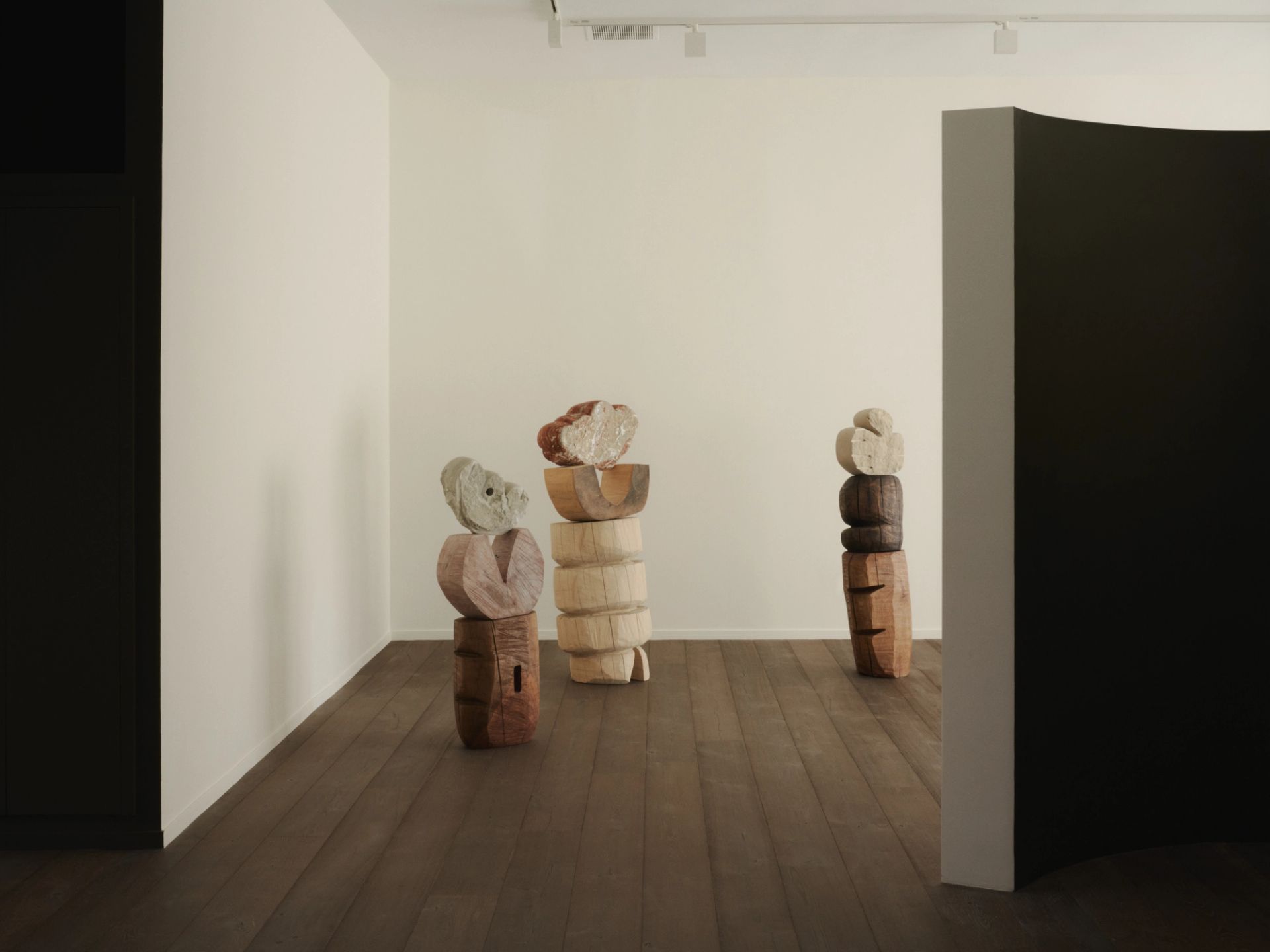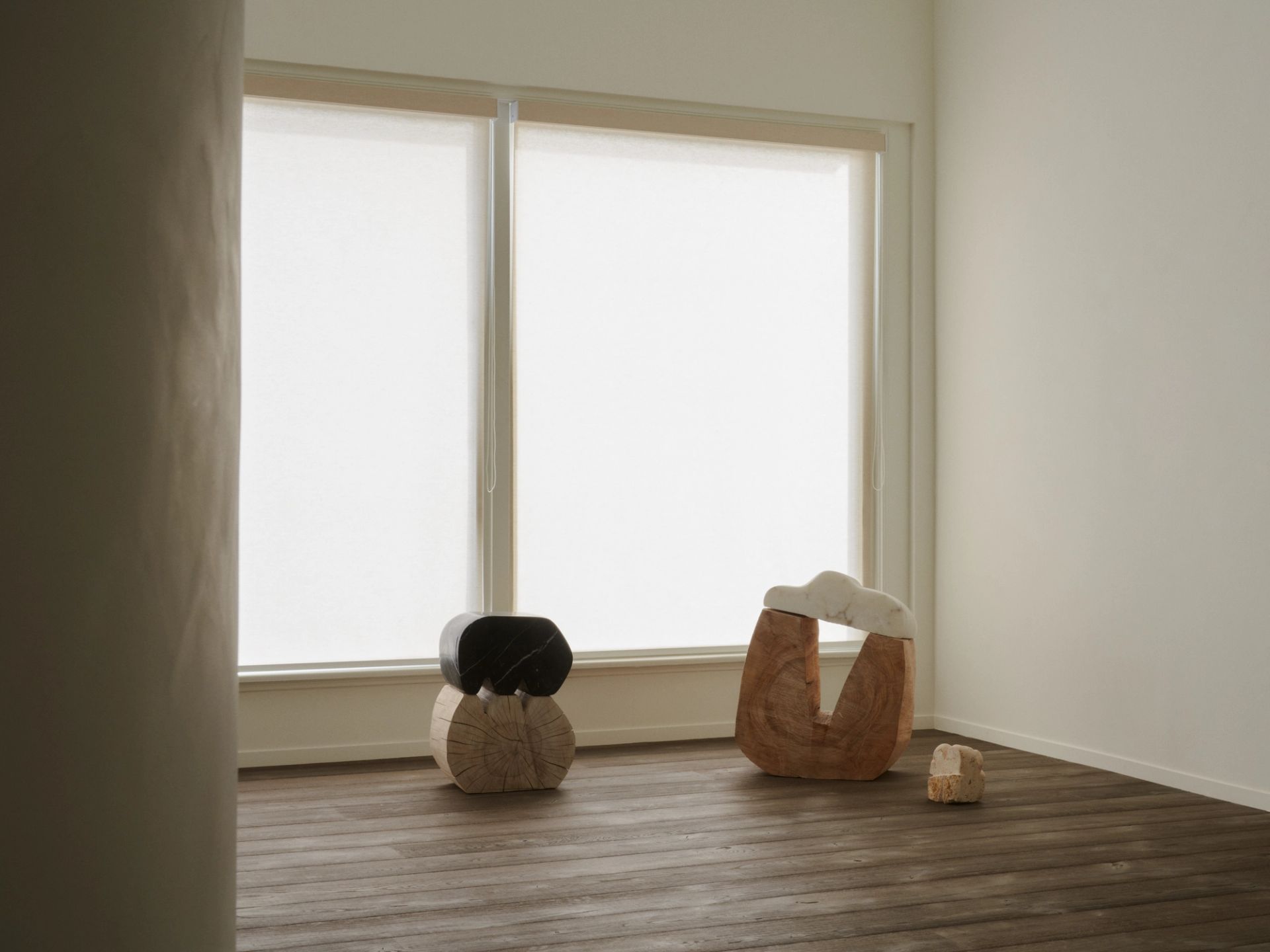Nadia Yaron
Sculptor Nadia Yaron carves weighty, organic forms from wood, stone and metal in her home studio in Hudson, New York. Her pieces are hewn with chainsaws and grinders, a necessarily violent practice that contrasts with the tranquil sculptures. “Using a chainsaw is such a cathartic thing,” says Yaron. “There is a push and pull to it, and out of the chaos comes some quiet.” In her studio, a 19th century barn in the grounds of her home, her pieces are heaved up with a chain lift rigged from the rafters, and stacked on top of one another in teetering structures. “My work is purposefully imperfect, which reminds me of the fragility of nature,” she says.
Yaron began her practice in 2017, and has a background in wood furniture making and textiles. Her mother was an art teacher, and encouraged her to create from a young age. She was born in São Paulo, Brazil in 1978 and raised in New York, and read Women’s Studies and Sociology at Hunter College, NYC. In 2018, she exhibited her wood sculptures for the first time at an Architectural Digest Design show, and won best in show for fine art. She has since shown at Blunk Space, Maybaum Gallery, Heather Guadio, Jeff Lincoln, TIWA Select; and at Totum, an exhibition curated by Kyle DeWoody in Ojai and Los Angeles, CA.
Her sculptures are inspired by small, transient events, such as a fallen leaf, a gust of wind, a pink iris pushing itself up through the spring snow, or a cloud passing overhead. “I love observing nature everyday. We are in a valley surrounded by mountains, and there is so much movement,” she says. These encounters are rendered in stone, a process which begins with grinding outside, and turns to the slow, quiet movements of sanding and shaping with hand tools, with one curve sometimes taking several days of repetitive motion to be achieved. “It is something you have to surrender to,” she says. “You have to give yourself to the stone and let it be.”
My work is purposefully imperfect and imbalanced. The imbalance leads to a bit of discomfort, a dissonance, and an awareness of how fragile life can be – a reminder that nature, including humans, are both perfect and imperfect all at once.

Featured works
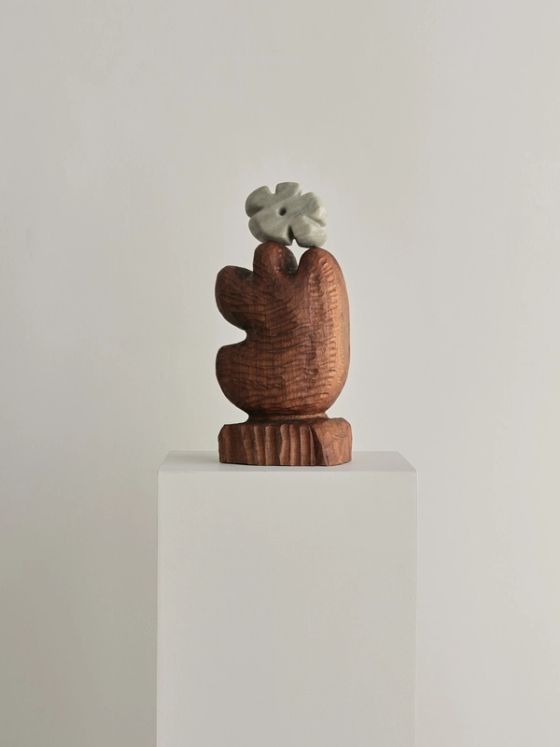
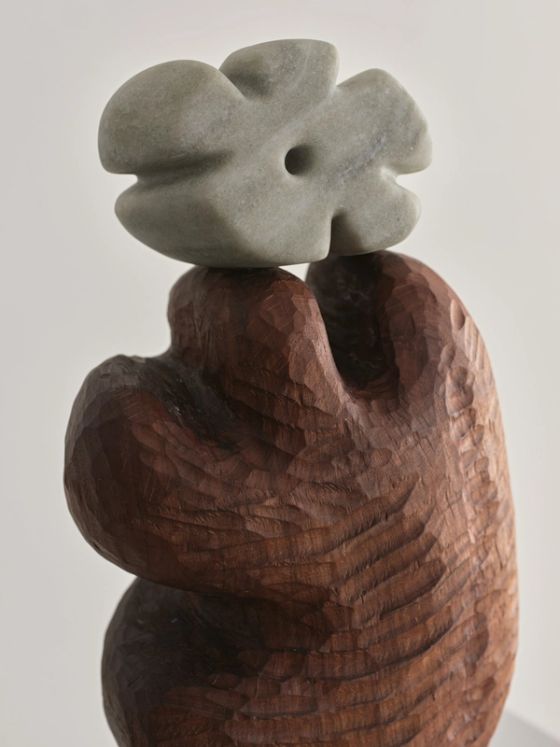
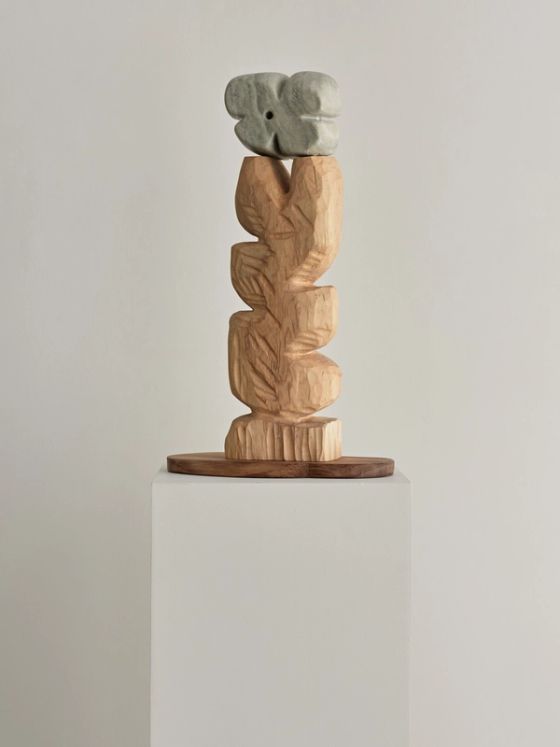
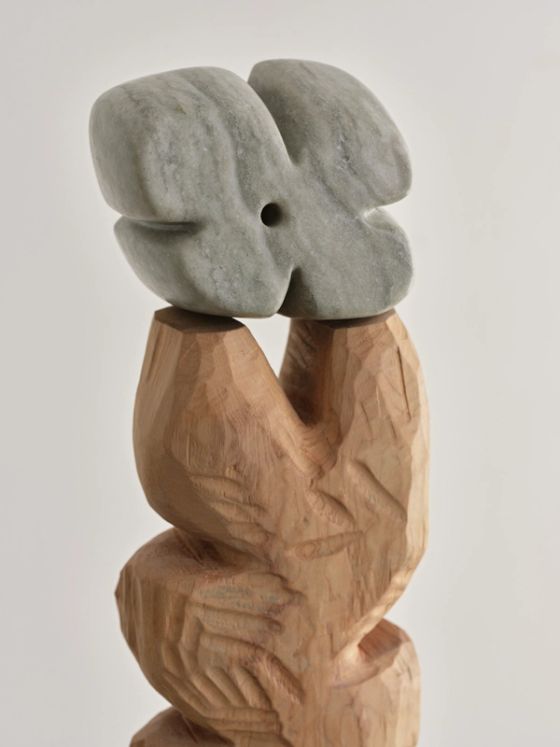 LA Gallery
LA GalleryNadia YaronSummer Night’s Flower, 2025
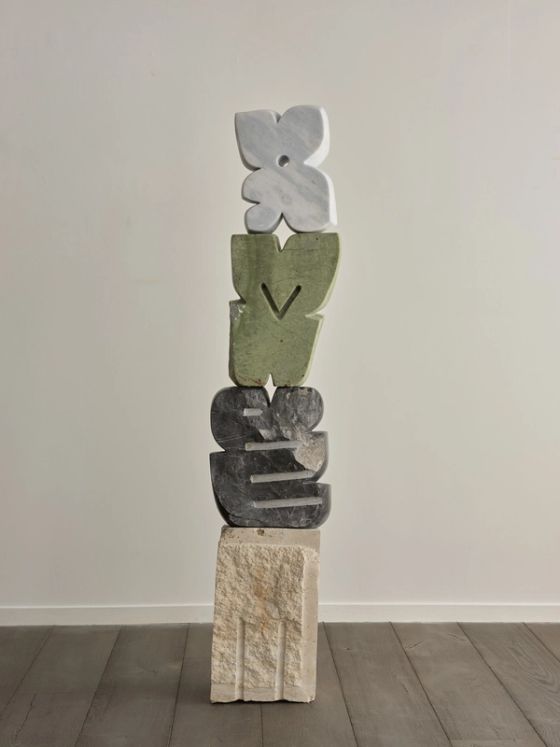
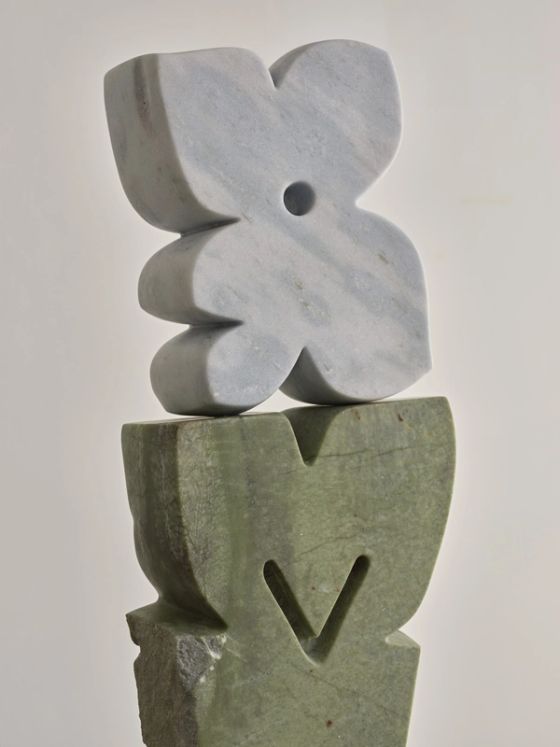 LA Gallery
LA GalleryNadia YaronBlue Spirit Tulip, 2025
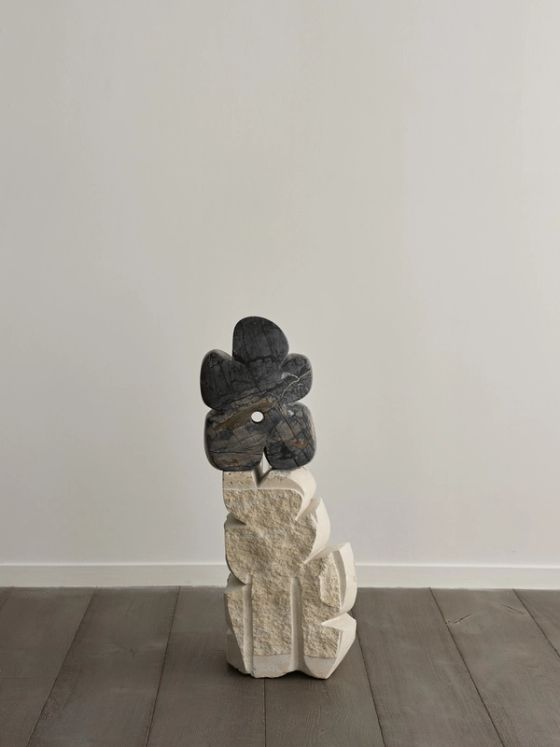
 LA Gallery
LA GalleryNadia YaronFlowering Orchid, 2025

 LA Gallery
LA GalleryNadia YaronManifesting Spring, 2025

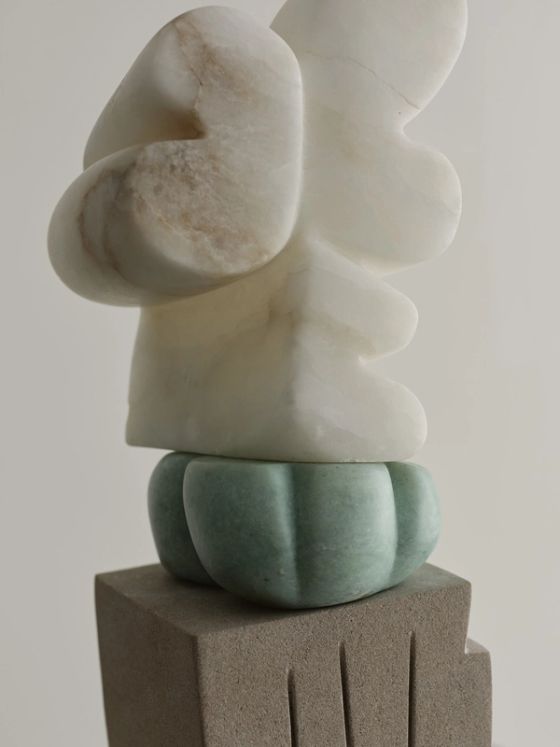 LA Gallery
LA GalleryNadia YaronOrchid for Theo, 2025

 LA Gallery
LA GalleryNadia YaronOrange Poppy, 2025
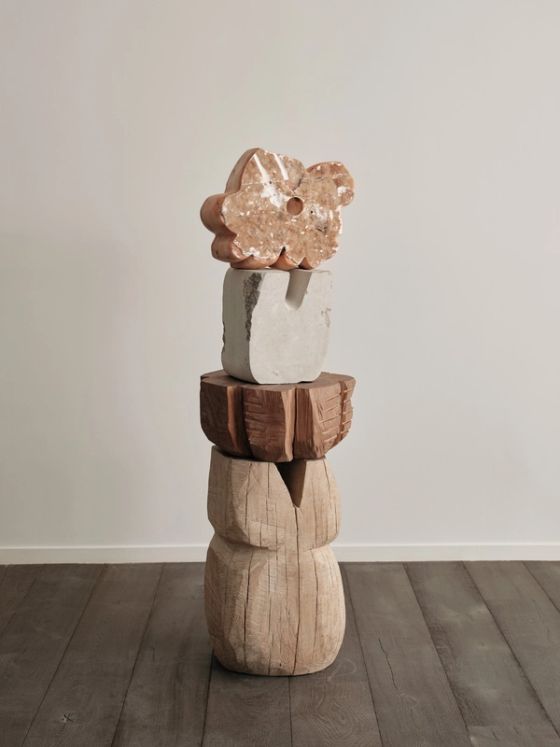
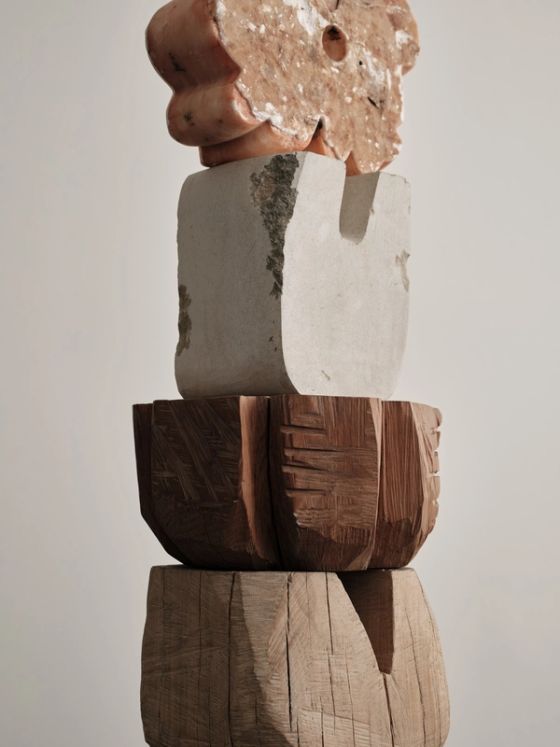 LA Gallery
LA GalleryNadia YaronPink Anemone, 2024
Related
- 01.22.23
Gallery Representation of Nadia Yaron
Read moreSculptor Nadia Yaron carves weighty, organic forms from wood, stone and metal in her home studio in Hudson, New York. Her pieces are hewn with chainsaws and grinders, a necessarily violent practice that contrasts with the tranquil sculptures. “Using a chainsaw is such a cathartic thing,” says Yaron. “There is a push and pull to it, and out of the chaos comes some quiet.” In her studio, a 19th century barn in the grounds of her home, her pieces are heaved up with a chain lift rigged from the rafters, and stacked on top of one another in teetering totemic structures “My work is purposefully imperfect, which reminds me of the fragility of nature,” she says.
- 12.16.23
100 Hooks - JB Blunk
Read moreNadia Yaron's Gratitude Flower for JB (2023) is part of ‘100 Hooks’, a group exhibition at Blunk Space featuring over 100 esteemed artists and designers from the US, UK, Europe, Mexico, and Japan. The show is a continuation of JB Blunk’s seminal 1981 solo exhibition ‘100 Plates Plus’ held at David Cole Gallery in Inverness, California. In a nod to his training in Japan, Blunk’s plates denied the distinction between art and craft. Blunk enacted a particular synthesis of art and the objects of life, creating these functional objects thoughtfully and artfully throughout his career.
This exhibition consists of 100 different responses to the same brief: to create one hook of any size or material. Hooks, like plates, are utilitarian objects. Each participating artist and designer was invited as a result of an existing connection with Blunk’s work. From exhibiting at Blunk Space, a residency at his iconic home and studio, or through the inspiration of his oeuvre, each participant has been touched by Blunk’s legacy. Each of the artists and designers offers their own approach to materials, form, and process, but also the relationship of aesthetics to function.
